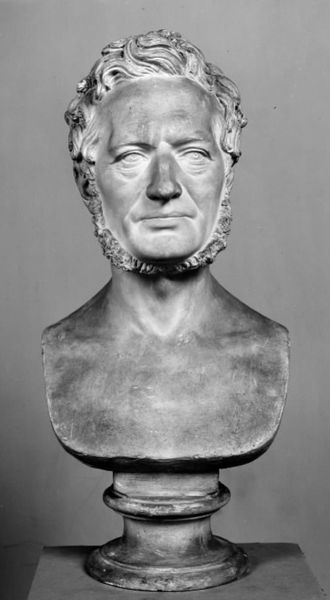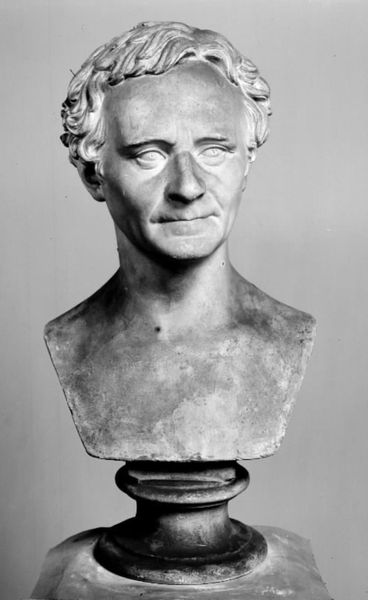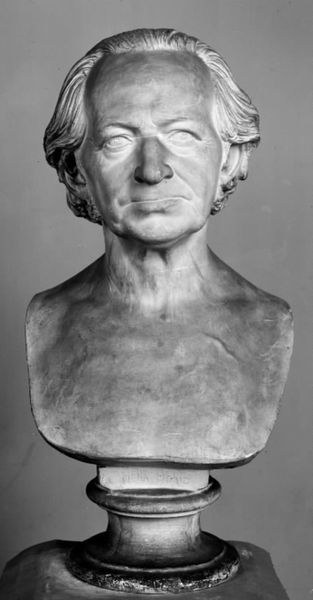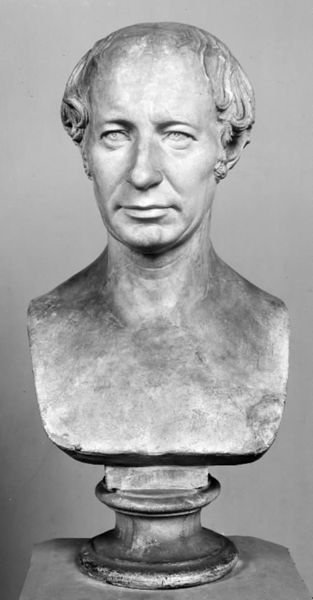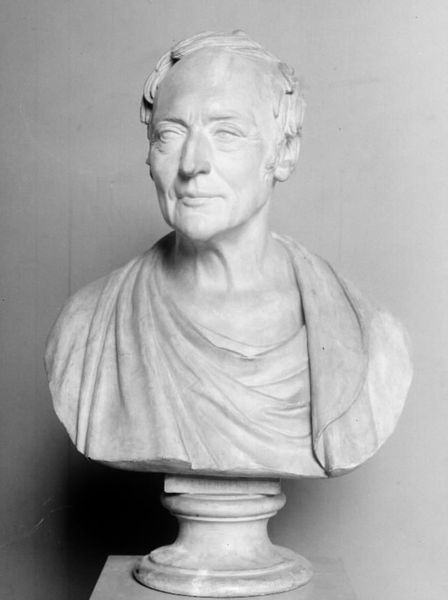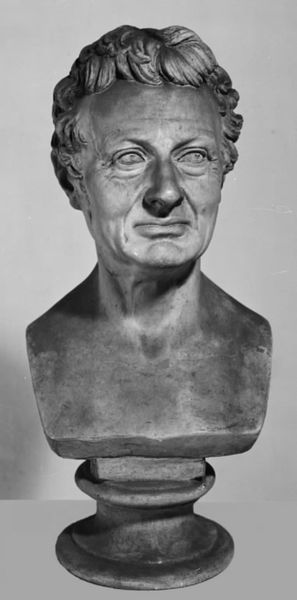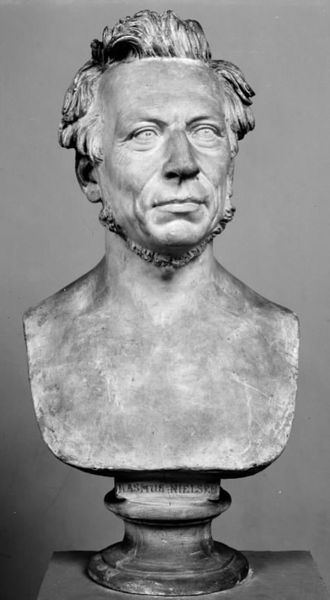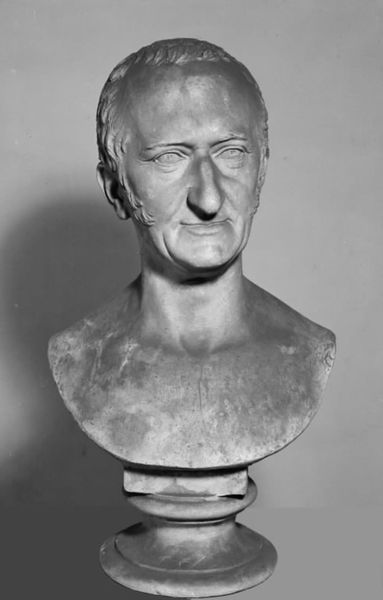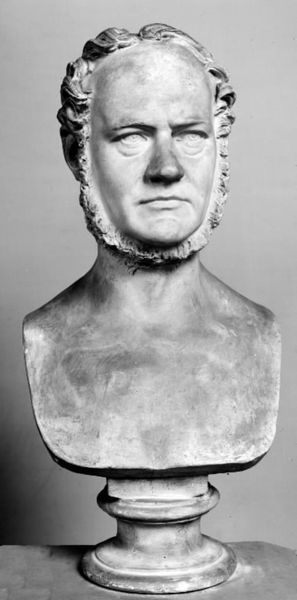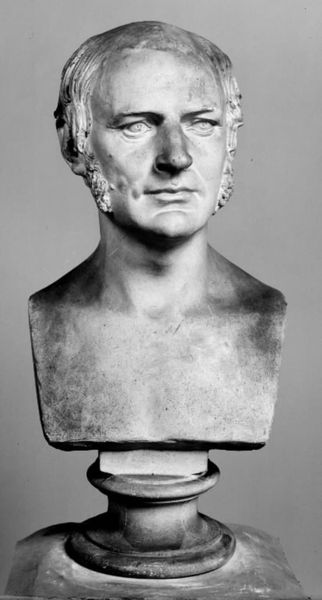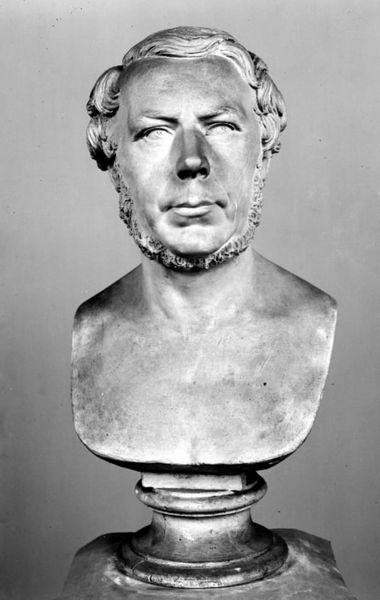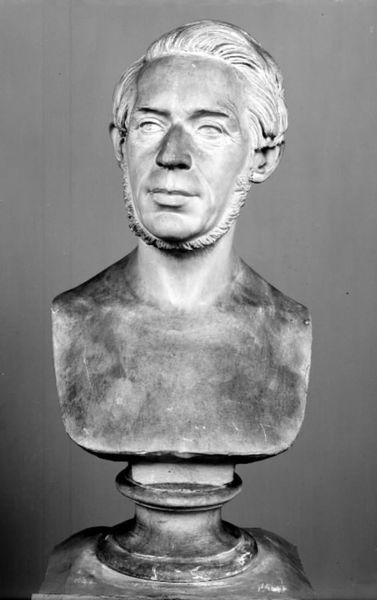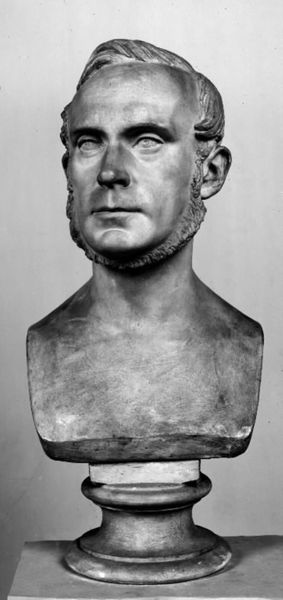
Johanne Brandstrup, née Fenger. The Artist's Mother 1897
0:00
0:00
carving, alabaster, sculpture, marble, pendant
#
portrait
#
carving
#
sculpture
#
alabaster
#
sculpture
#
black and white
#
marble
#
pendant
Dimensions: 29 cm (height) (Netto)
Curator: What a piece, eh? A face emerging, almost hesitant, from raw material... it's really something to see. Editor: Indeed. What strikes me immediately is the vulnerability conveyed. This bust of Johanne Brandstrup, sculpted in 1897 by her son Ludvig, speaks volumes about aging, about maternal relationships in the shadow of patriarchy. Curator: Patriarchy. Always gotta bring it back to that, don’t you? I like to think, here in this piece, the roughness around the head acts like a halo. There’s an incredible tenderness—or, hell, maybe it's exhaustion. Both ring true, don't they? And, of course, made from the soft glow of alabaster or perhaps even marble. Editor: Yes, but the historical context is essential. While it appears tender, we must ask whose tenderness is privileged? A male artist portraying his mother... is this act one of love or control? We see here that this piece represents a limited sphere for women who often rely on their sons to protect their memories through public commemoration such as a sculpture. Curator: I can almost feel the artist’s hands on the stone. Do you get the feeling this was an intimate moment turned into something... eternal? What does a person see, know, feel about a person whom they call mother, after all? Editor: What's striking is the lack of idealization so common to the time. You know, this woman, wrinkles and all, exists defiant in her aging within this idealized period. The detail captures so well not beauty as perceived at the time, but the impact and beauty of weathering and lived experiences. Curator: A mother's life written in stone! Gosh. Editor: And whose life, too often, is unwritten in our art history books. So let us acknowledge those silences even as we study her portrait here. Curator: Yeah. Still makes me wonder about that raw material, you know? Was it there to trap her or celebrate her? It really is amazing. Editor: Always a dialogue. This is a testament to the necessity of continual interrogations in museums, and hopefully, beyond them.
Comments
No comments
Be the first to comment and join the conversation on the ultimate creative platform.
